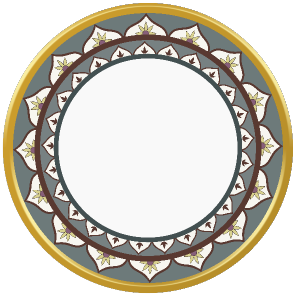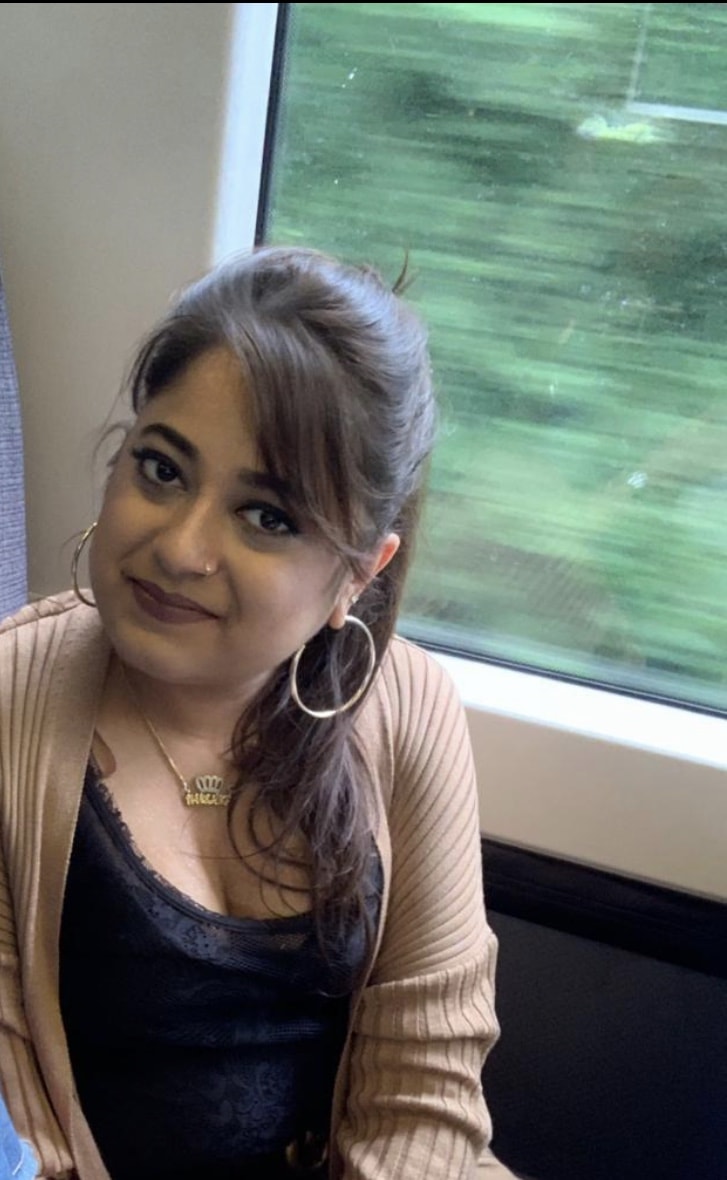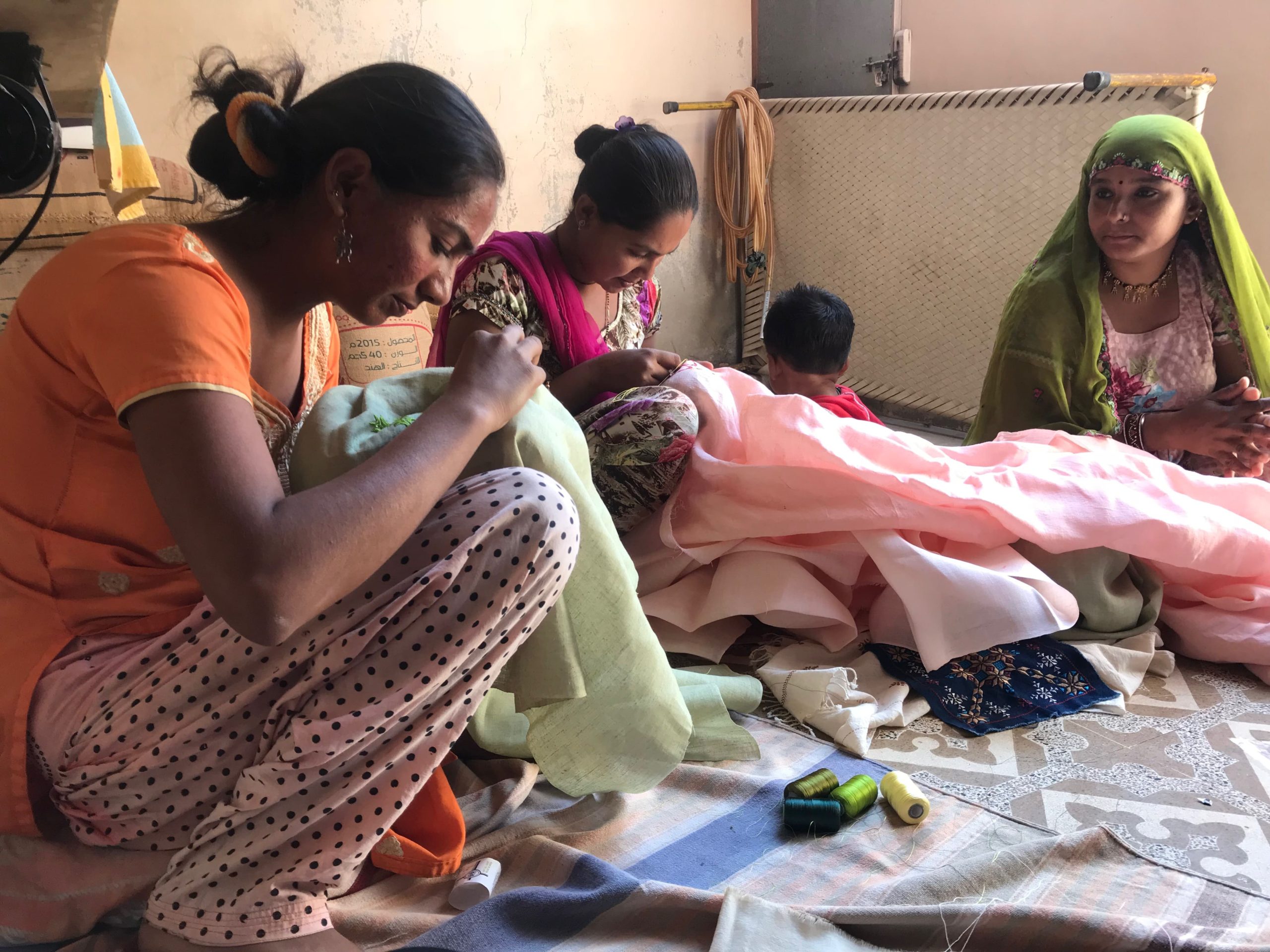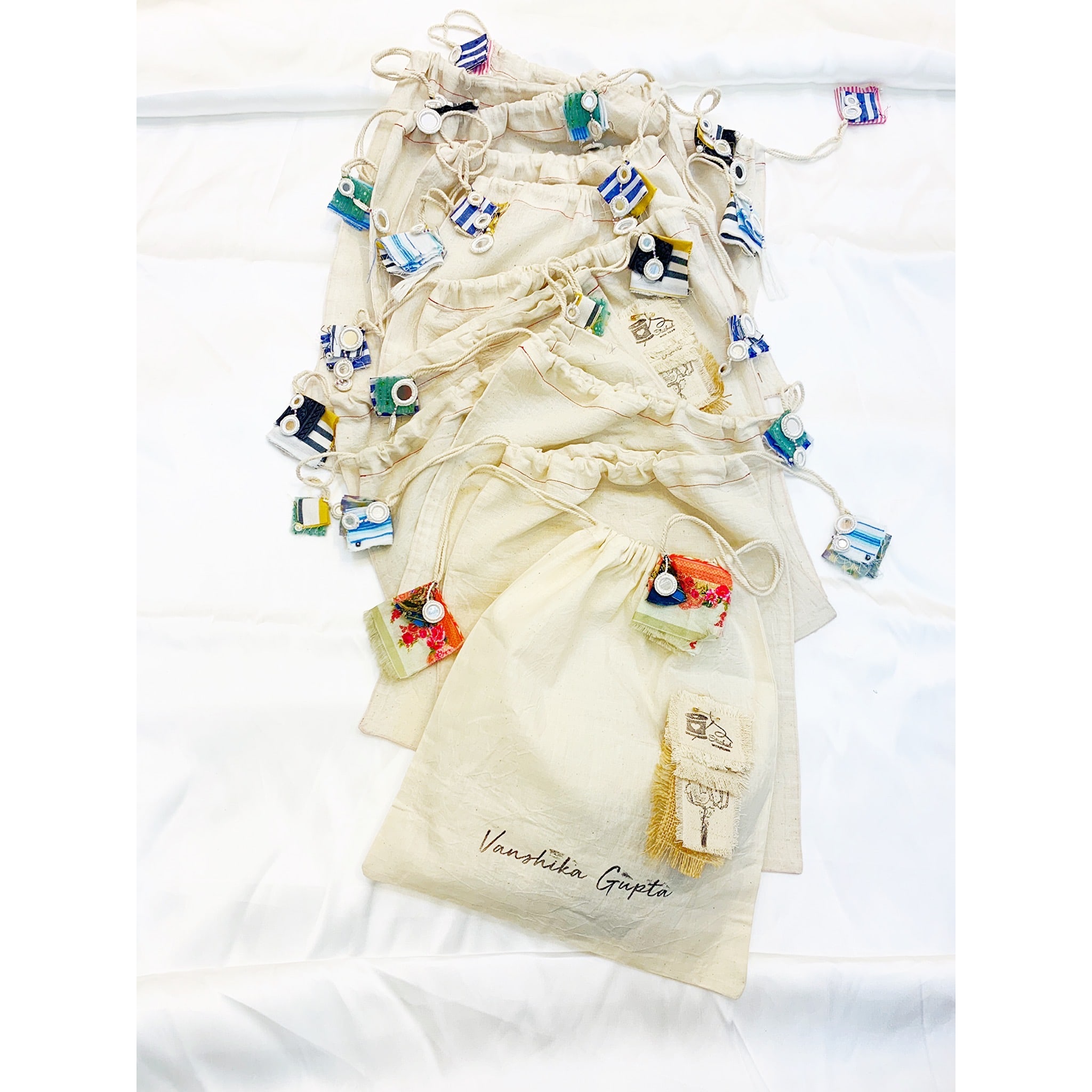

0


0

FASHION
By Admin
16 August, 2020

 Artisans making masks
‘Suf’ embroidery is a form of counted thread embroidery practiced nowadays in the Kutch region of Gujarat, western India, and beyond. It is characterized by a type of economy stitch worked from the back. The patterns are generally based on a triangle or ‘suf’, and are geometric, symmetrical, and very detailed.
The coveted motifs of Suf embroidery aren’t ordinarily drawn onto the base fabric; instead, they are developed around a progression of triangles and diamonds. Frequently, little bits of glass or mirror (shisha) is incorporated into the patterns.
https://www.instagram.com/p/CDk8-UflzqV/
“The themes are never drawn. Every craftsman envisions his or her plan, then counts it out, in reverse! Gifted craftsmen in this craft require a highly developed comprehension of geometry and sharp visual perception. A suf craftsman shows virtuosity in detailing, filling symmetrical patterns with tiny triangles, and accent stitches.” Vanshikha Gupta mentioned.
https://www.instagram.com/p/CDspd7VpriR/
Each mask is hand-knitted in different colours and patterns. The art is such that each mask takes at least 2-3 days to get completed.
"We have made cotton mask, it’s 3ply mask, as we have used 3 layer’s in the mask making, the upper layer is cotton weave fabric with the Suf embroidery and the bottom layer is 100% cotton stripe fabric and cotton slub fabric and in the middle, we have used Kala cotton fabric layer, as out mask is a breathable reusable rewash-able mask. We have given a comfortable elastic in some of the masks and in some of the masks, we have given adjustable sting to avoid stress at the back of the ear. In that mask, you can adjust the string according to your own size and tie at the back of your head. We have a variety of 2 types of masks 3D and 2D. It covers your mouth perfectly and is gentle to the skin. I’m the season of protecting own self by wearing a mask , so why so wear a beautifully embroidered mask, it’s new normal. And if not washing the mask you can sanitize them always.
Artisans making masks
‘Suf’ embroidery is a form of counted thread embroidery practiced nowadays in the Kutch region of Gujarat, western India, and beyond. It is characterized by a type of economy stitch worked from the back. The patterns are generally based on a triangle or ‘suf’, and are geometric, symmetrical, and very detailed.
The coveted motifs of Suf embroidery aren’t ordinarily drawn onto the base fabric; instead, they are developed around a progression of triangles and diamonds. Frequently, little bits of glass or mirror (shisha) is incorporated into the patterns.
https://www.instagram.com/p/CDk8-UflzqV/
“The themes are never drawn. Every craftsman envisions his or her plan, then counts it out, in reverse! Gifted craftsmen in this craft require a highly developed comprehension of geometry and sharp visual perception. A suf craftsman shows virtuosity in detailing, filling symmetrical patterns with tiny triangles, and accent stitches.” Vanshikha Gupta mentioned.
https://www.instagram.com/p/CDspd7VpriR/
Each mask is hand-knitted in different colours and patterns. The art is such that each mask takes at least 2-3 days to get completed.
"We have made cotton mask, it’s 3ply mask, as we have used 3 layer’s in the mask making, the upper layer is cotton weave fabric with the Suf embroidery and the bottom layer is 100% cotton stripe fabric and cotton slub fabric and in the middle, we have used Kala cotton fabric layer, as out mask is a breathable reusable rewash-able mask. We have given a comfortable elastic in some of the masks and in some of the masks, we have given adjustable sting to avoid stress at the back of the ear. In that mask, you can adjust the string according to your own size and tie at the back of your head. We have a variety of 2 types of masks 3D and 2D. It covers your mouth perfectly and is gentle to the skin. I’m the season of protecting own self by wearing a mask , so why so wear a beautifully embroidered mask, it’s new normal. And if not washing the mask you can sanitize them always.
 SUF embroidered masks
Vanshika has completed her graduation from Pearl Academy and then she went to London to study further. The niche designer has launched her first collection called spring summer 2020 “The Blues of Bars”. The collection plays with cotton fabric and stripes making it a new fashion statement.
The budding designer is working to revive the old craft of Kutch called ‘SUF’ and also supporting the craftsman in their livelihood in this period of a pandemic. Since the new normal these days is Mask, so with the help of Kutch artists, she is making different embroidery cotton mask with unique designs and colors. These masks are sustaining craft and preserving them, artisans have been working from home at this time. The Label_Vanshika are making eco-friendly and sustainable masks and making it a new fashion statement.
SUF embroidered masks
Vanshika has completed her graduation from Pearl Academy and then she went to London to study further. The niche designer has launched her first collection called spring summer 2020 “The Blues of Bars”. The collection plays with cotton fabric and stripes making it a new fashion statement.
The budding designer is working to revive the old craft of Kutch called ‘SUF’ and also supporting the craftsman in their livelihood in this period of a pandemic. Since the new normal these days is Mask, so with the help of Kutch artists, she is making different embroidery cotton mask with unique designs and colors. These masks are sustaining craft and preserving them, artisans have been working from home at this time. The Label_Vanshika are making eco-friendly and sustainable masks and making it a new fashion statement.
 Packaging during pandemic
"All the masks that have been made are from leftover fabric scraps, we have used all the samples of Suf embroidery (that we have been practicing to develop good designs by making sample before finalizing the embroidery, past few months). In the making of masks Upper layer, as for the middle layer we have used cotton layer and spun bound fabric for better breathing Process and protection, and for the last layer, we have used another cotton stripe fabric (the leftover fabric of SS2020 collection). As I am sustaining the craft and also practicing to use waste and sample fabric in making masks", she added.
Packaging during pandemic
"All the masks that have been made are from leftover fabric scraps, we have used all the samples of Suf embroidery (that we have been practicing to develop good designs by making sample before finalizing the embroidery, past few months). In the making of masks Upper layer, as for the middle layer we have used cotton layer and spun bound fabric for better breathing Process and protection, and for the last layer, we have used another cotton stripe fabric (the leftover fabric of SS2020 collection). As I am sustaining the craft and also practicing to use waste and sample fabric in making masks", she added.